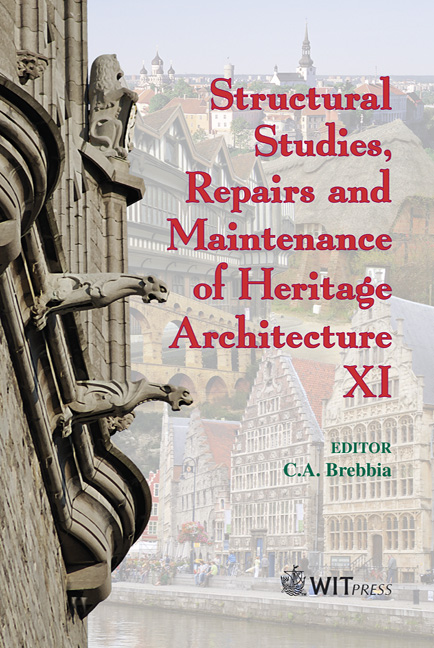Upgrading Ile-Ife’s Vernacular Architecture Heritage
Price
Free (open access)
Transaction
Volume
109
Pages
12
Page Range
59 - 70
Published
2009
Size
1,817 kb
Paper DOI
10.2495/STR090061
Copyright
WIT Press
Author(s)
C. O. Osasona & F. O. Ewemade
Abstract
The importance of vernacular architecture is increasingly being acknowledged worldwide. This is particularly true of developing economies where the globalization process is progressively being questioned, and where appropriateness of approaches and technologies has become increasingly topical. Ile-Ife, a city in south-western Nigeria, has long caught the world’s attention notably for its superlatively naturalistic bronze and terracotta heads, and for its cardinality in ethnological considerations of the Yoruba, a major socio-cultural group locally and in the diaspora. As with several ancient and historically significant Nigerian towns, Ile-Ife is blessed with a rich legacy of heritage buildings ranging from the near-pristine traditional, through the equally typical colonial, to the hybrid vernacular. The traditional heart of Ile-Ife is characterized by dilapidated buildings and out-migration, typical of old cities worldwide (at some point in their historical development). Within a two-kilometre radius of Ife Palace, there are choice buildings typifying the peak in the town’s Afro-Brazilian architecture – alas, in a sorry state of maintenance. This paper is an account of the efforts of Faculty and students of the Department of Architecture, Obafemi Awolowo University, to initiate restoration of some of these vernacular buildings. The tentative interventions have highlighted the potential for streetscape upgrading, in the short-term, and renewal of such properties (and ultimately, the inner-core urban fabric) in the long-term. With the government and/or NGOs tapping into such architecture-based tourism potential, not only will these samples of Ife heritage building have their lives extended by proper conservation, but also the economic viability of the ancient city will be further enhanced. Keywords: inner-core upgrading, Nigerian vernacular architecture, heritage architecture, transformed traditional architecture, Nigerian architectural pluralism, Ile, Aguda, Saro, repatriated slaves, folk building practices.
Keywords
inner-core upgrading, Nigerian vernacular architecture, heritage architecture, transformed traditional architecture, Nigerian architectural pluralism, Ile, Aguda, Saro, repatriated slaves, folk building practices




